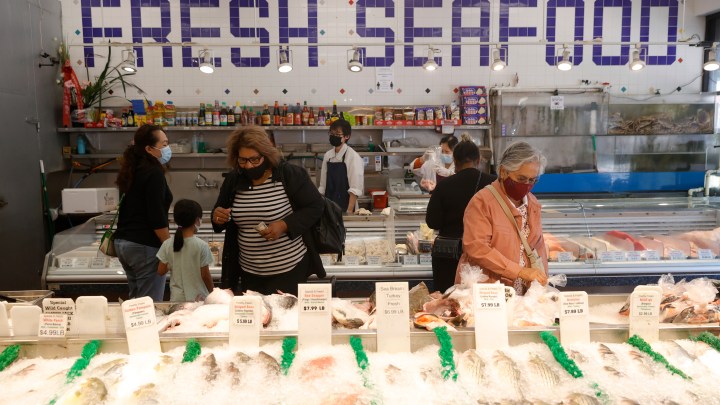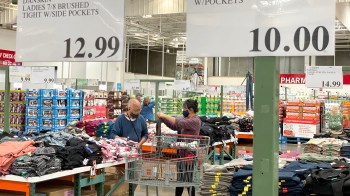
Consumers are getting used to higher inflation

Another day in this pandemic-wracked economy, another installment of “inflation through the roof.”
The latest reading on consumer prices came out today — up year over year for the month of September by 5.4%, which is just a smidge higher than inflation was running in August. The core rate — stripping out food and energy, which were really soaring in September — was up 4% year over year.
This is pretty much the way it’s been running for months now, with clogged-up supply chains and labor shortages driving up the prices of everything from energy to groceries to vehicles. And some of those, like used cars and gasoline, are up by double-digits since last year.
It’s all sinking in for consumers, as well, who have shifted their expectations of inflation higher.
In the report, economists saw broad price spikes for pocketbook items that impact Americans every day.
“Food prices, rents, vehicle prices, gasoline prices rose in September,” said Ken Matheny, with IHS Markit.
The Federal Reserve Bank of New York reports that consumers expect inflation this time next year will still be running above 5% — an all-time high for the survey.
Pandemic price shocks might be dislodging low inflation expectations that have lasted for decades, said Duke University economist Connel Fullenkamp.
“People are much more short-term focused and they reflect much more on their short-term experience, you know, when they go to the grocery store or the gas station,” he said.
Plus, the disruptions of the pandemic might make matters worse.
“We’ve experienced shortages,” Fullenkamp said. “You have to pay more if you can get something. That may be enough experience to change people’s outlook and to say, ‘Oh, gosh, I can pay a little bit more, to get something sooner.’ To me, that’s one of these things that could really be a game changer.”
This can set off an inflationary spiral, according to Matheny.
“If consumers expect higher inflation, businesses may perceive more pricing power, and actual price increases may accelerate and lead to higher actual inflation,” he said.
Then, workers demand higher wages to keep up with the higher prices, which could lead the Fed to raise interest rates to slow inflation — and the recovery.
But, there’s something the Fed knows about us consumers, said Joseph Brusuelas at consulting firm RSM.
“Consumer inflation expectations run one to one and a half percent above actual inflation,” he said.
But what matters most to the Fed, Brusuelas said, is what financial professionals — investors — think inflation will be long term. And he said they’re pegging inflation five to 10 years out right around the Fed’s target of 2%.
There’s a lot happening in the world. Through it all, Marketplace is here for you.
You rely on Marketplace to break down the world’s events and tell you how it affects you in a fact-based, approachable way. We rely on your financial support to keep making that possible.
Your donation today powers the independent journalism that you rely on. For just $5/month, you can help sustain Marketplace so we can keep reporting on the things that matter to you.

















